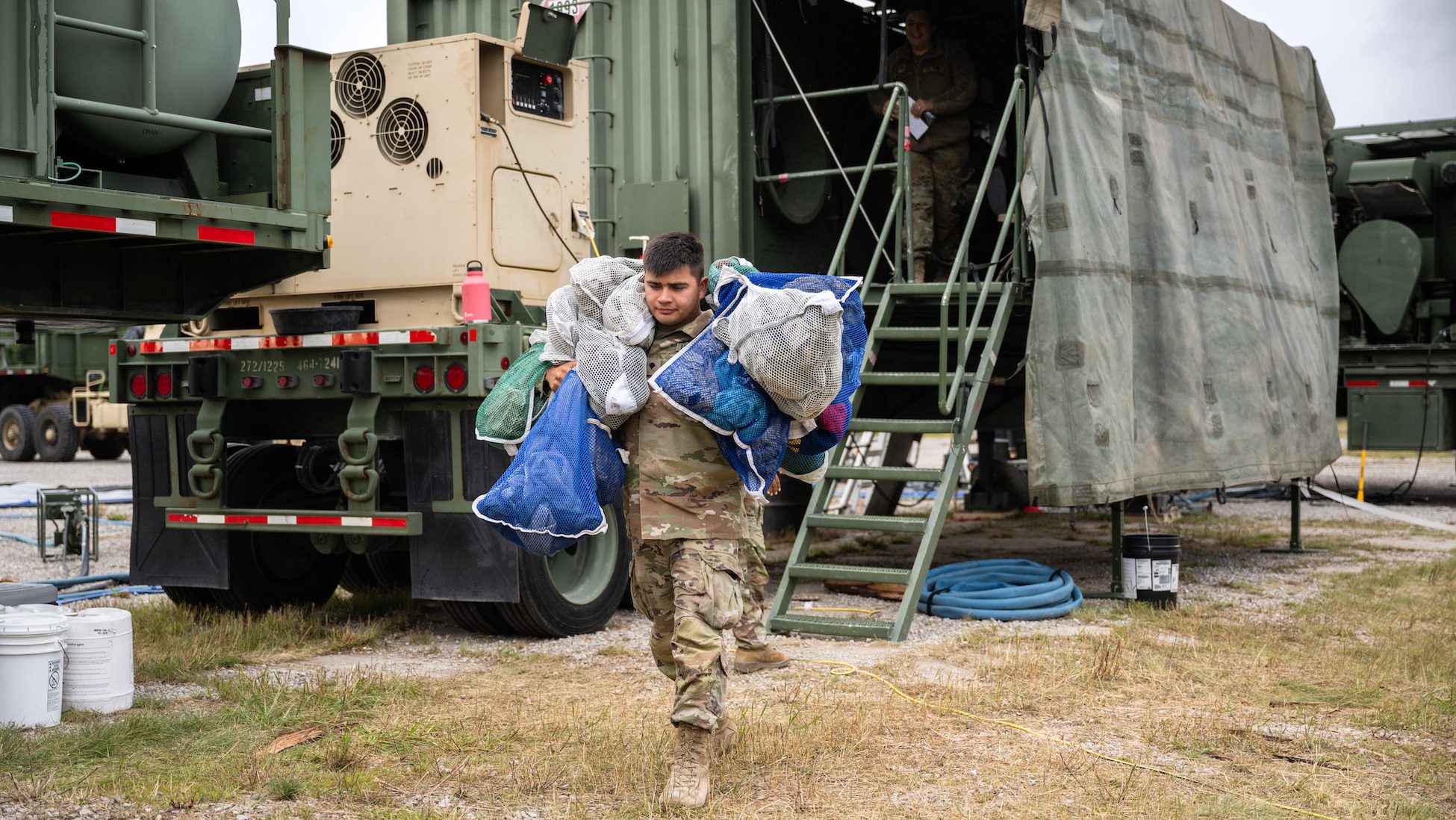

So long, you unsung heroes who cleaned everyone’s shit, out there in the shit.
In the name of transformation, by October, the Army will have reclassified active duty soldiers tasked with setting up mobile shower and laundry services in the field.
While the recent notice indicates the end of 92S shower and laundry specialist soldiers in the active duty Army, the service has still advertised laundry specialist jobs in the National Guard as of mid-June — so it’s likely that some part-time soldiers will still be stuck cleaning cammies so crusted with grime and sweat that they can stand up on their own.
The changes are part of the Army’s force shift from isolated counter-terrorism operations to the Pentagon’s plan to fight larger wars that are spread out over multiple continents. In recent years, the Army has made other changes to its force structure, which have included reclassifying cavalry scouts into infantry and air defense roles and reducing the number of military police in lieu of more civilian cops.
A July 7 memo reviewed by Task & Purpose states that the “divestiture” of laundry and shower specialists is a “key component in closing critical gaps to enable” large-scale combat operations.
The changes come as the Army has shifted laundry and shower operations to private contractors over the years.
These soldiers will be reclassified by Oct. 1 to other jobs, such as automated logistics specialists, petroleum supply specialists, culinary specialists or water treatment specialists, according to the memo.
From lice in the trenches, to laundry in the field
The Army’s quartermaster history lays out the comparative luxury that soldiers today only know after years of troops suffering with lice and trench foot from dirty clothing and limited shower access.
Soldiers have only had their laundry done by specialists since the turn of the 20th century. Before that, the Army paid soldiers’ wives or other “respectable women” to handle the laundry and mending of uniforms.
“While the soldiers were on the move, whether in the Civil War, the frontier operations, or for other reasons, there was no laundry support,” according to the Army. “They just did the best they could, which wasn’t very good.”
The U.S. followed the lead of the British and French militaries which already had some laundry services during World War I, so they built mobile laundry plants made up of four large trailers that were pulled by a steam tractor. But because of their size, they weren’t able to get to the front lines as fast as some may have liked. By the end of the war, 90% of soldiers had lice.
In World War II, the Army had the machines at the ready, but the lice problem was not as dire because soldiers were moving more often and were more dispersed.
However, the machines that were designed and built for wartime laundry services were still vulnerable to air attacks since they were mounted on heavy trucks and limited in the distances they could travel to keep up with troops on the front lines. As a result, soldiers turned to their French allied laundry services or cleaned the uniforms themselves. Their wool uniforms could not be cleaned in hot water but still needed to be disinfected, so they were put into chambers with methyl bromide gas to kill lingering pests.
Showering on the other hand, was a little more straightforward and soldiers in the field typically got to rise off every week to 10 days. Soldiers turned in their dirty uniforms and received clean, disinfected ones.
The practices generally continued during the Vietnam and Korean wars as older equipment was replaced by newer pieces. During Vietnam, the Army was only able to process 45% of its field laundry, leaving the rest of local contractors.
More recently, during the Wars in Iraq and Afghanistan, large military bases had showers and laundry services available. However, for soldiers out in far-flung outposts, they were often left with a water bucket and a scrub brush, at least until things had calmed down enough for a convoy carrying all the requisite material and personnel to provide laundry and shower services to arrive.
The latest on Task & Purpose
- Air Force updates uniform standards including new rules for boots
- The Army and Navy want the ‘right to repair’ their own equipment
- Here is every rifle Marines have used in the last 250 years
- The Army has realized that horses are no longer good for ‘warfighting’
- Army will look for false accusations, consider ‘credibility’ in misconduct cases
